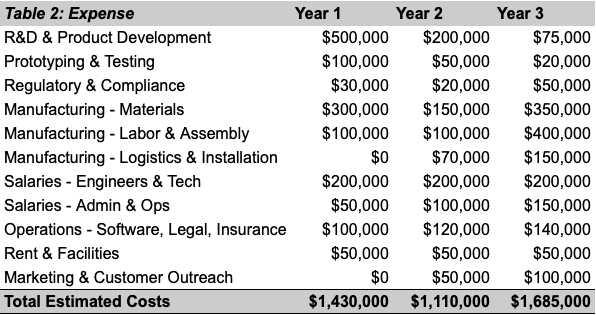How to Build a Simple Financial Model for Your Startup
Many founders underestimate the value that a financial model can offer their startup. They tend to be overly focused on solving a problem, creating something new, or disrupting an industry. However, it’s important to recognize that numbers drive decisions. A simple financial model provides insight into your business trajectory before challenges arise.
A well-constructed financial model is not just for attracting investors—it serves as a crucial tool to answer three key questions:
How much money will I bring in?
How much will it cost to run this business?
How long can I keep going before I run out of cash?
Initially, you don’t need a complex spreadsheet with multiple tabs and projections. You need something simple, clear, and functional—a model that provides enough visibility to make informed decisions. As your company grows, you can bring in an experienced CFO, financial modeler, or fractional finance lead to refine your numbers. But in the early days, building and understanding a financial model on your own is important.
For a deep dive into managing startup finances, check out our Beginner’s Guide to Unit Economics.
OceanFlow Energy: A New Startup Tackling Wave Energy
To make this practical, let’s introduce OceanFlow Energy, a fictional startup developing wave energy converters—machines designed to harness ocean waves to generate electricity.
Unlike software startups that can launch quickly, hardware-focused climate tech startups require substantial time and capital before reaching commercialization. Developing, testing, and manufacturing the technology takes years before revenue begins. This reality makes financial planning essential for survival.
For the sake of this example, we’ll make some simplifying assumptions to demonstrate how to build a financial model for an early-stage startup.
Revenue: Basic Assumptions and Ways to Fund the Business
In this case, we’ll assume OceanFlow follows a three-year progression:
Year 1: Product development, testing, and early operations.
Year 2: First sale—validating the market and proving demand.
Year 3: Multiple sales and early scaling.
This timeline illustrates how capital-intensive startups must carefully manage financial planning during the early years. Many deep-tech and built-environment startups face similar hurdles in proving their product and securing enough funding for commercialization.
Costs: What It Takes to Build & Run the Business
Even with a strong product vision, every startup must understand its cost structure early on. Without clear financial planning, running out of cash before revenue comes in is too easy. OceanFlow's initial years will be capital-intensive, requiring research, team-building, compliance, and manufacturing investments.
Since no business can predict the future with absolute certainty, the financial figures provided are educated estimates based on the company’s anticipated trajectory. As the business evolves, actual costs will fluctuate, and a robust financial model will adapt accordingly. The goal is to anticipate how expenses will change over time as OceanFlow transitions from research and development to production and scaling.
The key takeaway is that expenses change as a business grows. In the early stages, costs primarily focus on development and team building. In contrast, as the business matures, expenses are driven by production, logistics, and scaling operations. As revenue increases, it is essential to manage cash flow carefully to ensure the company can sustain its growth without facing financial difficulties.
For guidance on startup budgeting, check out our Cash Flow Management Guide.
Bringing It All Together: Why This Financial Model Matters
A financial model serves as a decision-making tool. It's not about crafting a flawless projection of the future, as outcomes will rarely align perfectly with our expectations. Instead, an effective model aids founders in understanding how revenue, costs, and cash flow change over time. This understanding empowers them to make informed and proactive decisions as their business grows.
For OceanFlow, the financial model reveals several key insights:
Costs precede revenue: The first year is entirely pre-revenue, meaning funding must last long enough to support the business until sales begin.
Sales ramp-up over time: OceanFlow, as a capital-intensive business, won’t achieve high-volume sales immediately. The model reflects a gradual increase in sales, starting slow and accelerating as time goes on.
Cash flow management is crucial: As revenue increases, expenses will also rise. Careful cash flow monitoring—specifically, when money comes in and goes out—is essential. A startup can deplete its cash reserves, regardless of how promising its future may seem.
A financial model is not static—it's a dynamic tool. Founders must update it regularly to track progress, adjust assumptions, and make informed decisions as the business develops.
Final Thoughts & Next Steps
If you're a founder creating your own financial model, start simple. Focus on revenue, costs, and cash flow before adding complexity. Remember, a good model is one that you actually use. Begin today; there's no need for a perfectly detailed model with granular line items—concentrate on the major categories. Ideally, aim for a 36-month model.
Over time, you'll need to adjust it, revisiting it frequently to test and improve it. This will help you predict your business's future trajectory. Don't just build the model and leave it untouched; it serves no purpose if you don't leverage it as a valuable tool.
So, if you're building your own financial model, start simple. Focus on:
Revenue: How much will you bring in?
Costs: What does it take to run your business?
Cash Flow: How long will your money last?
No need for complex line items—focus on major financial categories and build a 36-month model. Update it frequently to refine assumptions and stay ahead of financial risks.
For more insights, check out these related posts:
Mastering Gross Margin – Learn how to measure and improve your profitability.
Understanding Unit Economics – Break down revenue, costs, and contribution margin.
Managing Cash Flow – Ensure your startup doesn’t run out of cash.
Need hands-on guidance? Explore my services or book a consultation to discuss your financial strategy.
Stay ahead with more insights—check out the full blog and subscribe here for regular updates.



